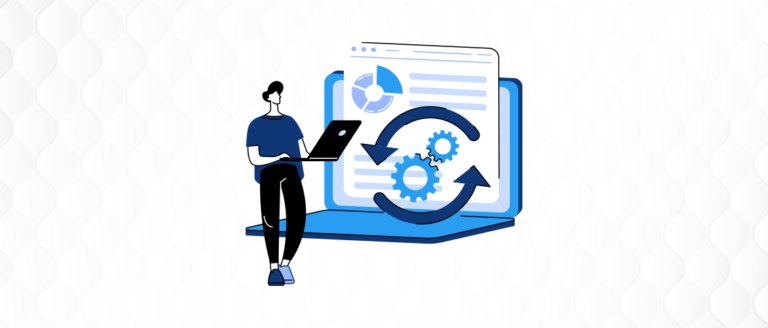Start with the DevOps – Brief introduction!
Microsoft Azure DevOps is a collection of services that gives software development teams the tools they need to plan, create, and deploy applications better and effectively. It is a cloud-based platform with several capabilities, including artifact management, continuous integration and deployment, version control, and project management.
The advantages of utilizing Azure DevOps include streamlined software development processes, improved team collaboration, and increased productivity. It also assists in reducing the time and effort required for manual tasks, allowing teams to focus on more important tasks.
This blog will go over the fundamental concepts and features of Azure DevOps, as well as provide a step-by-step guide to getting started with the platform. We will look at the various Azure DevOps components, such as Boards, Repositories, Pipelines, and Artifacts, and provide best practices for using the platform effectively.
Explanation of the different components of Azure DevOps (Boards, Repositories, Pipelines, Artifacts)
Microsoft Azure DevOps is a combination of four major components that help with the software development process:
Boards:
This component is used to manage agile projects, track work items, and organize backlogs.
Repositories:
Version control is achieved using repositories, which allow teams to collaborate and manage code changes.
Pipelines:
This component is used for continuous integration and delivery, automating application development, testing, and deployment.
Artifacts:
This component manages packages and dependencies and acts as a central repository for binaries that are shared and stored.
Step-by-step guide on how to create an Azure DevOps account:
To set up an Azure DevOps account, follow these steps:
1. Visit the Azure DevOps website and select “Start free.”
2. Sign in using your Microsoft account or create a new account if you don’t already have one.
3. Provide the necessary information, such as your organization’s name, the specifics of the project, and billing information if applicable.
4. Review and accept the terms and conditions, then click on the “Create project” button.
Overview of the different pricing plans and their features:
Microsoft Azure DevOps provides multiple pricing plans to cater to a range of requirements and budgets. These plans include Free, Basic, Standard, and Advanced plans, each with its own set of features and accommodations. The Free plan is appropriate for open-source projects and small teams, whereas the Basic plan is appropriate for small to medium-sized teams that need additional build and deployment features. The Standard plan is suitable for larger teams that require more advanced features like release gates and test plans, whereas the Advanced plan is intended for large teams or organizations with complex requirements. Furthermore, Azure DevOps provides enterprise-level plans with customized pricing and features. You can find more information about Azure DevOps pricing on their official pricing page:
Step-by-step guide on how to create a project:
In Azure DevOps, a project is a container for organizing and managing work items, repositories, pipelines, and other resources associated with a particular software development effort.
1. Log in to your Microsoft account and visit the Azure DevOps website.
2. Click the “New Project” button in the upper right-hand corner.
3. Enter the project name and description, then select the visibility settings and a process template.
4. To begin creating your project, click the “Create” button.
Access to various resources and functionality inside the project, such as work item tracking, code repositories, and pipelines, can be managed through the configuration of project settings and permissions. You can manage users and 0groups, create permissions, personalize the project dashboard, and set up notifications and alerts as a project owner or administrator.
Boards and Backlogs:
Boards and backlogs are tools in Azure DevOps that are used to manage and monitor work items in software development projects. Epics, Features, User Stories, and Tasks are used to divide a project into smaller, more manageable units. To create and manage work items, navigate to the Boards section in your project, select the appropriate work item type, fill in the required details, assign the work item to a team member, and track its progress through the backlog stages. You can, for example, use a Kanban board or a Sprint board to view the status of all work items and schedule upcoming tasks.
Repositories and Pipelines
Repositories and Pipelines are essential components of Azure DevOps that are used in software development projects for version control and continuous integration/continuous delivery (CI/CD). Azure DevOps supports Git and TFVC as version control systems, allowing teams to effectively collaborate and manage code changes. Pipelines automate application development, testing, and deployment across multiple platforms and tools. To create and manage repositories and pipelines in Azure DevOps, you can navigate to the Repos or Pipelines tab, select the appropriate tool or repository, customize the pipeline with tasks for code development, testing, and deployment, configure triggers and schedules, and monitor pipeline execution and review test results and code coverage reports. For example, a team can use Azure Repos to manage code changes and use Azure Pipelines to automate the build and deployment process of their web application.
Why partner with us?
By collaborating with Al Rafay Consulting, a Microsoft-certified company that specializes in Microsoft Azure DevOps and Azure consulting services, a team or organization may gain access to professional advice and assistance as well as customized solutions made to meet the unique requirements of that team or organization. We can help create procedures more efficiently and quickly, which will result in better software and a shorter time to market.


